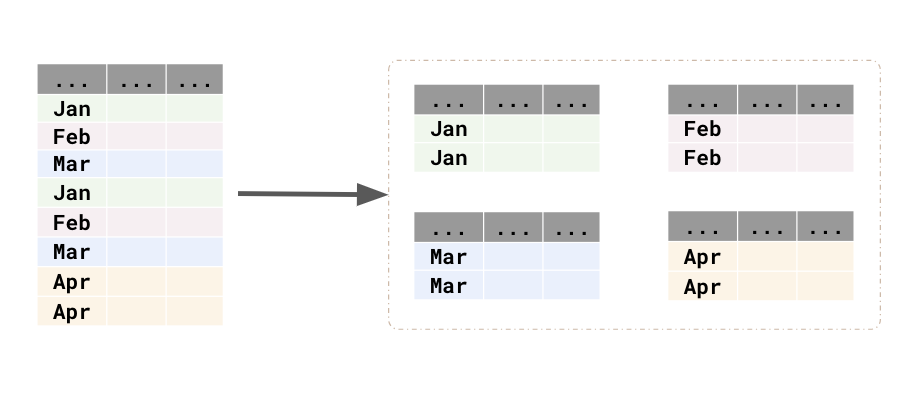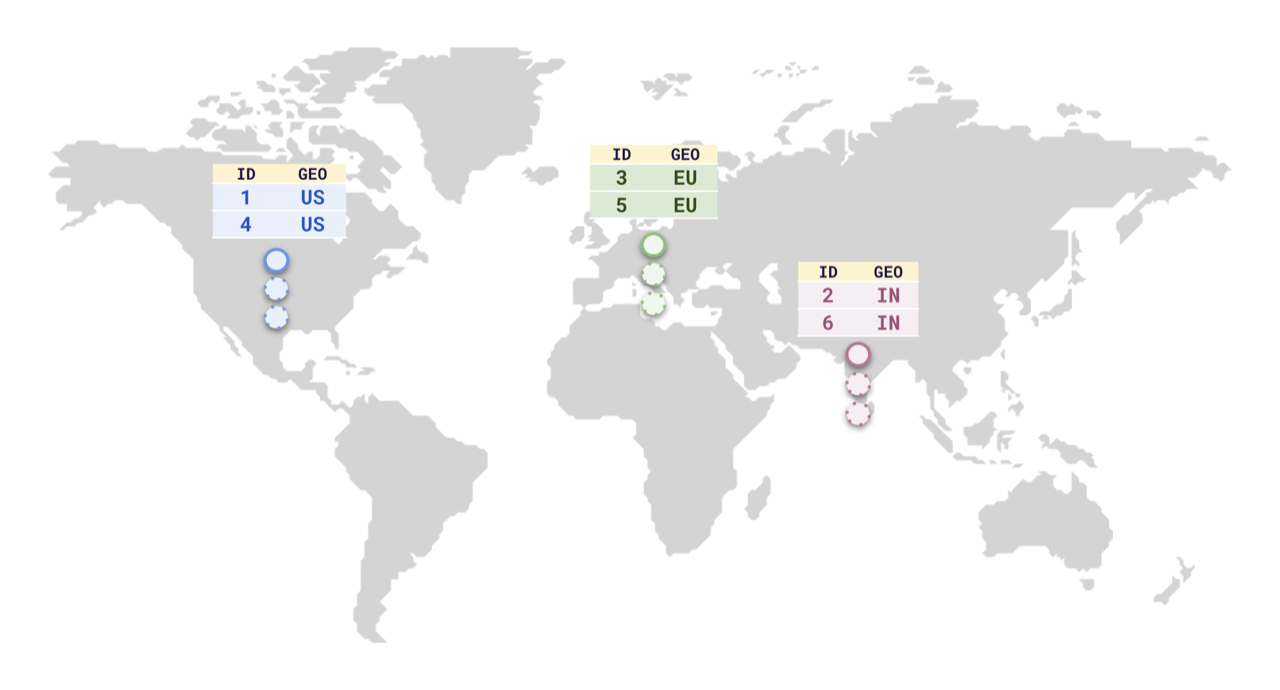Partitioning tables YSQL
Data partitioning refers to the process of dividing a large table or dataset into smaller physical partitions based on certain criteria or rules. This technique offers several benefits, including improved performance, easier data management, and better use of storage resources. Each partition is internally a table. This scheme is useful for managing large volumes of data and particularly for dropping older data.
Manage large datasets
You can manage large data volumes by partitioning based on time (say by day, week, month, and so on) to make it easier to drop old data, especially when you want to retain only the recent data.

Place data closer to users
When you want to improve latency for local users when your users are spread across a large geography, partition your data according to where big clusters of users are located, and place their data in regions closer to them using tablespaces. Users will end up talking to partitions closer to them.

Adhere to compliance laws
You can partition your data according to the user's citizenship and place their data in the boundaries of their respective nations to be compliant with data residency laws like GDPR.
